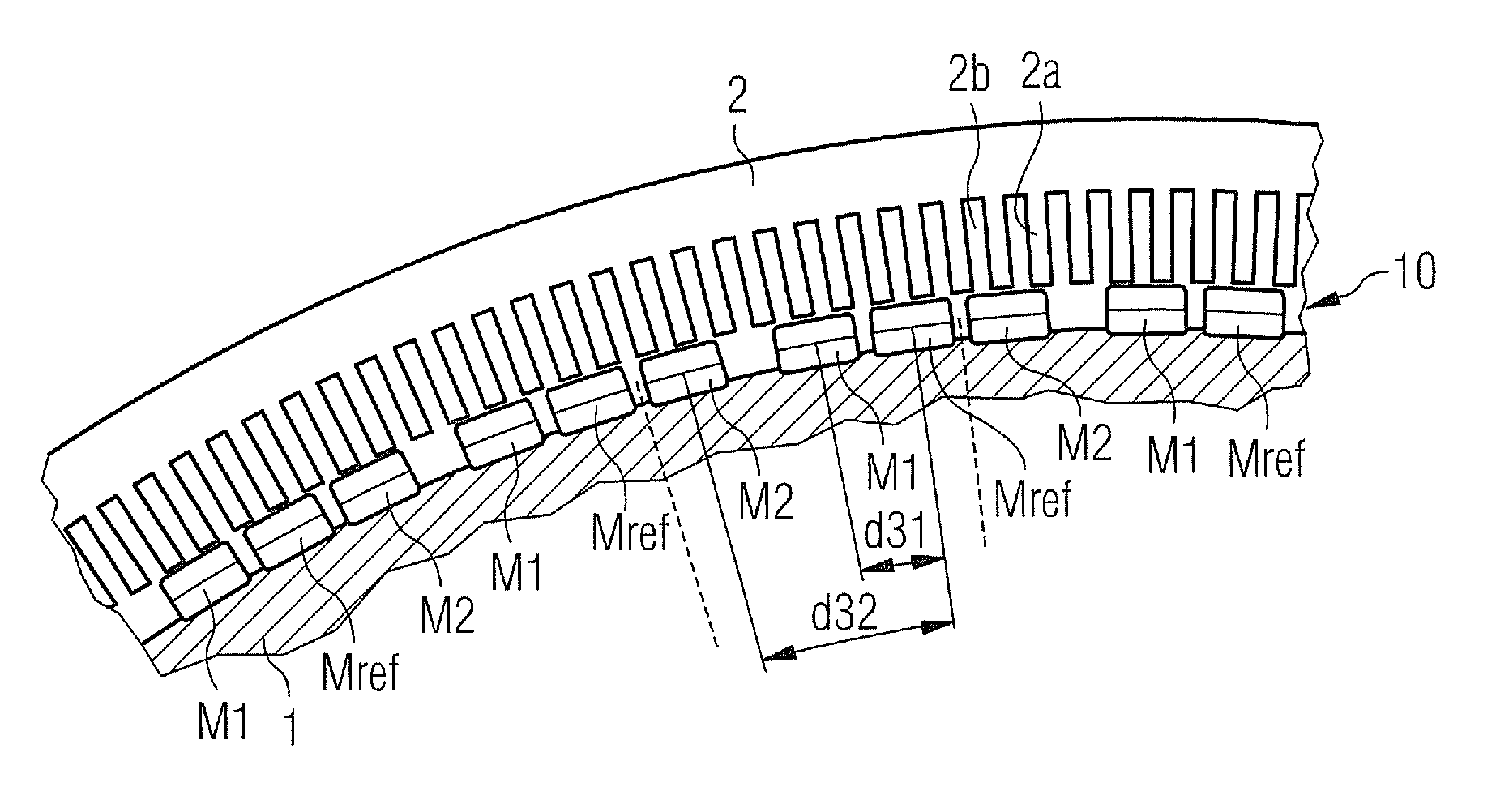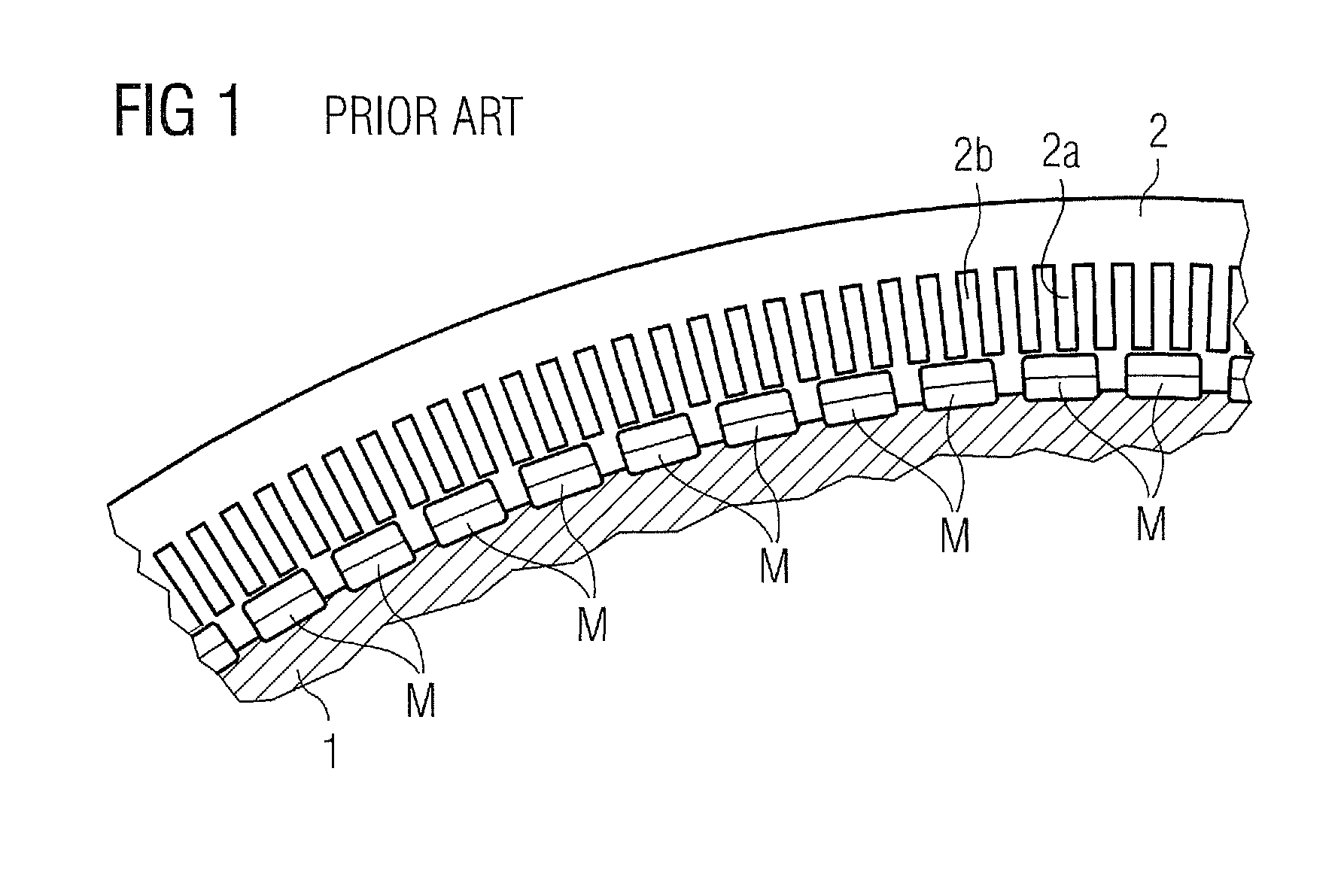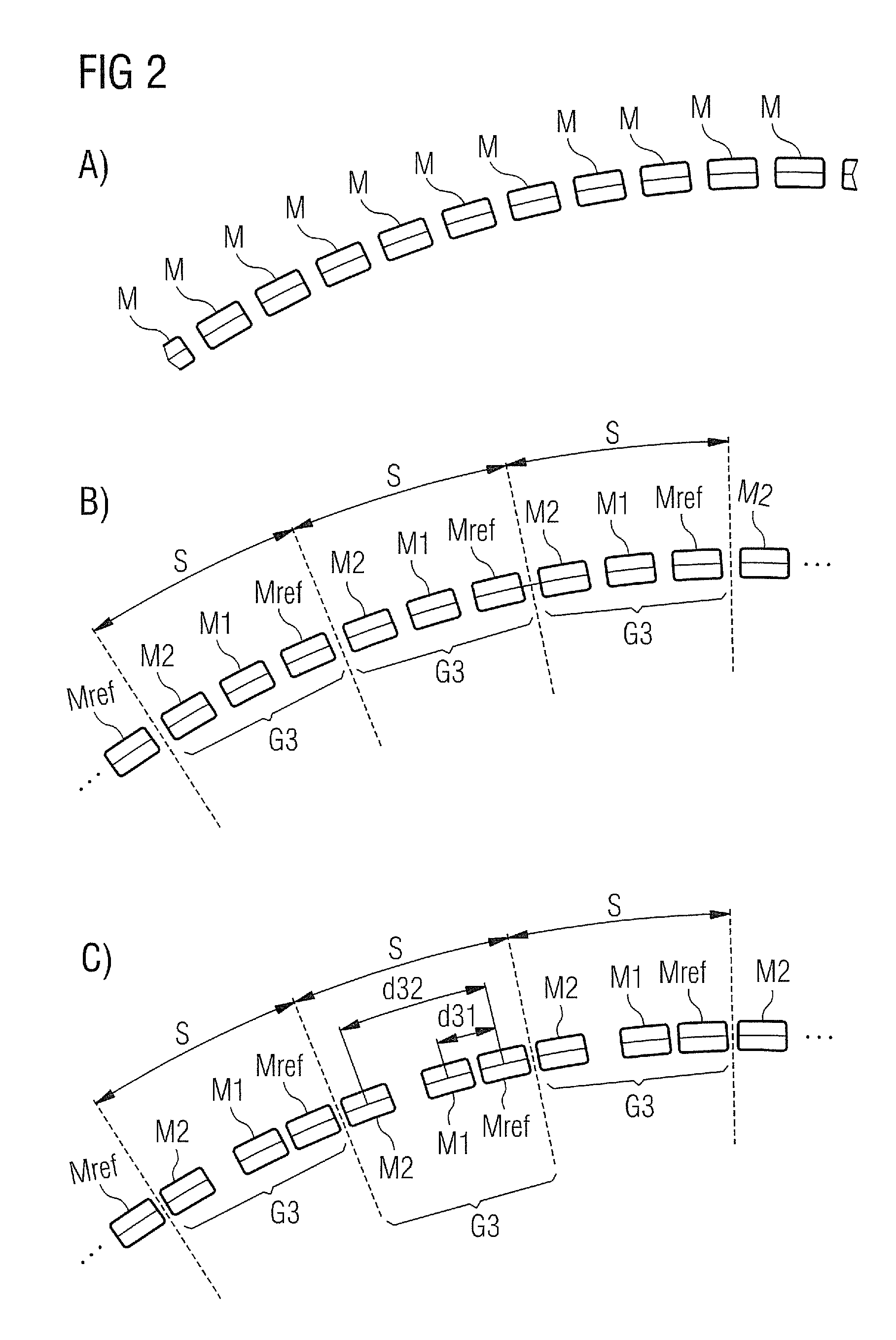Method of determining a magnet arrangement
a technology of arrangement and magnet, applied in the direction of magnetic circuit shape/form/construction, magnetic circuit rotating parts, electric generator control, etc., can solve the problems of shortening the life of the machine, affecting the overall efficiency, and affecting the operation of the motor and the generator. the effect of optimisation of the performance of the machine is much simpler and faster to carry out, and only a few performance parameters are minimised
- Summary
- Abstract
- Description
- Claims
- Application Information
AI Technical Summary
Benefits of technology
Problems solved by technology
Method used
Image
Examples
Embodiment Construction
[0031]In the drawings, like reference numbers refer to like objects throughout. Objects in the diagrams are not necessarily drawn to scale.
[0032]FIG. 1 shows a very simplified cross-section through an electrical generator 3, showing a rotor 1 and a stator 2, and a number of magnets M arranged on the rotor 1. In a conventional, simple arrangement, the magnets M are all spaced at equal distances from one another. The stator 2 comprises a plurality of teeth 2a defining a plurality of slots 2b for accommodating the stator windings (not shown). The stator 2 and therefore also the stator teeth 2a are generally made of steel so that, during operation, a magnetic force acts between the magnets M and the stator teeth 2a, known as cogging torque.
[0033]FIG. 2 illustrates some of the steps taken to arrive at a first magnet arrangement 10 according to the invention for two performance parameters of an electrical generator. Firstly, the magnets M, shown in part A of the diagram to be initially eq...
PUM
 Login to View More
Login to View More Abstract
Description
Claims
Application Information
 Login to View More
Login to View More - R&D
- Intellectual Property
- Life Sciences
- Materials
- Tech Scout
- Unparalleled Data Quality
- Higher Quality Content
- 60% Fewer Hallucinations
Browse by: Latest US Patents, China's latest patents, Technical Efficacy Thesaurus, Application Domain, Technology Topic, Popular Technical Reports.
© 2025 PatSnap. All rights reserved.Legal|Privacy policy|Modern Slavery Act Transparency Statement|Sitemap|About US| Contact US: help@patsnap.com



